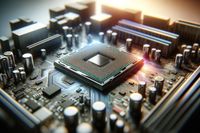3 Reasons Chromeboxes and Thin Clients Could Be the Future of Computing
Discover why Chromeboxes and thin clients have the potential to become the future of computing due to web-based workflows, reduced need for multiple powerful computers, and the increasing power of small devices.

Workflows are increasingly becoming web-based
One of the main reasons why tiny and lightweight PCs like Chromeboxes can be used for work tasks is because many tasks have transitioned to a web-based format. For example, writing, using content management systems, sending emails, and even photo editing can all be done through a web browser. The improved app support of ChromeOS has also contributed to the viability of Chromeboxes as work machines.
A significant number of people now utilize web-based tools like Google Drive and Microsoft 365 for their daily work. This shift has eliminated the need to download and install resource-heavy desktop applications. As a result, Chromeboxes and thin clients have become a more practical and efficient solution.
The rise of web-based workflows is evidence that Chromeboxes and thin clients can comfortably fit into modern computing.
People don't need multiple powerful computers anymore
In the past, it was common for individuals to own both high-performance laptops and desktop machines. However, with the advancements in laptop technology, having both devices has become redundant for most people. Instead, it is more cost-effective and practical to have a powerful laptop for on-the-go tasks and a lightweight PC for home or office use.
Alternative solutions like connecting a laptop to a monitor or using phone-to-desktop solutions are not ideal. A combination of a powerful laptop and a thin client or Chromebox provides the necessary web-based applications while still offering flexibility.
The reduced need for multiple powerful computers makes thin clients a more realistic and efficient option for many users.
Small devices are more powerful than ever
The increasing power of small devices has made it feasible for devices like Chromeboxes and thin clients to emerge as viable options. For instance, the latest Apple TV and streaming boxes like Amazon's Fire TV Cube are equipped with powerful chips that can run lightweight operating systems. These devices are now capable of performing tasks that were previously restricted to full-fledged PCs.
Chromeboxes and thin clients have also become smaller, more affordable, and more powerful over time. The combination of performance, size, and cost has paved the way for their potential mainstream adoption.
With their improved capabilities, thin clients and lightweight PCs have the potential to become the 'streaming sticks' of the PC world, offering an affordable and capable secondary computing option for many users.



